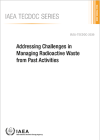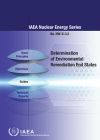Environmental remediation aims to reduce radiation exposure from contaminated soil, waste storage facilities or other contaminated infrastructure, groundwater or surface water. Its purpose is to return affected lands and water resources for safe public use.
Radiological environmental remediation
Nuclear regulators and operators of nuclear facilities are responsible for the prevention of accidents or practices that could result in the contamination of the environment. The IAEA’s Safety Standards, appropriately applied, provide the regulatory and technical infrastructure that helps forestall such situations.
If, however, radiation contamination of the environment cannot be prevented, IAEA safety requirements can be applied to remediate the contaminated areas. This is a systematic process that involves:
- addressing immediate safety concerns;
- a radiological characterization and safety assessment of contaminated areas;
- feasibility studies to identify remedial options;
- planning for remediation;
- the implementation of optimized remedial solutions; and
- the post-remediation management of contaminated areas.
To reduce the radiation exposure, radionuclides need to be removed or immobilized and the pathways of exposure modified so people cannot come into contact with radiological contamination.
Providing assistance to Member States
In cases of environmental contamination, the IAEA assists affected Member States in their efforts to reduce the radiological exposure to safe levels. The Agency’s assistance programmes help countries develop national remediation strategies, build technical competencies and strengthen their regulatory capacities for remediation. The IAEA is also extensively involved in radiological environmental impact assessments of former uranium production sites, areas affected by nuclear accidents and contaminated riverine systems.
To protect the public and resolve environmental liabilities, countries also need timely and accurate information on the safety and regulatory supervision of remediation activities; remediation strategies and technologies; management options; and stakeholder involvement. The IAEA supports its Member States through training, international peer reviews, international safety demonstration projects, expert missions and projects that focus on a specific national or regional problem. The Agency delivers these services through the IAEA technical cooperation programme and the network on environmental remediation (ENVIRONET).
The IAEA also offers to Member States mobile units for on-site measurements. These units, coupled with global positioning and geographic information systems (GPS and GIS), can play an important role in characterizing contaminated sites.








